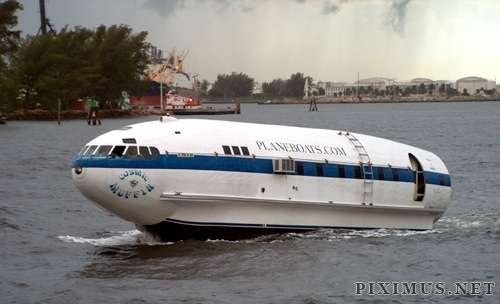 "ttyymmnn" (ttyymmnn)
"ttyymmnn" (ttyymmnn)
03/08/2016 at 12:35 • Filed to: planelopnik, planelopnik history
 10
10
 12
12
 "ttyymmnn" (ttyymmnn)
"ttyymmnn" (ttyymmnn)
03/08/2016 at 12:35 • Filed to: planelopnik, planelopnik history |  10 10
|  12 12 |
Welcome to This Date in Aviation History , getting you caught up on milestones, personalities, and important historical events in aviation from March 5 through March 8.
!!! UNKNOWN CONTENT TYPE !!!
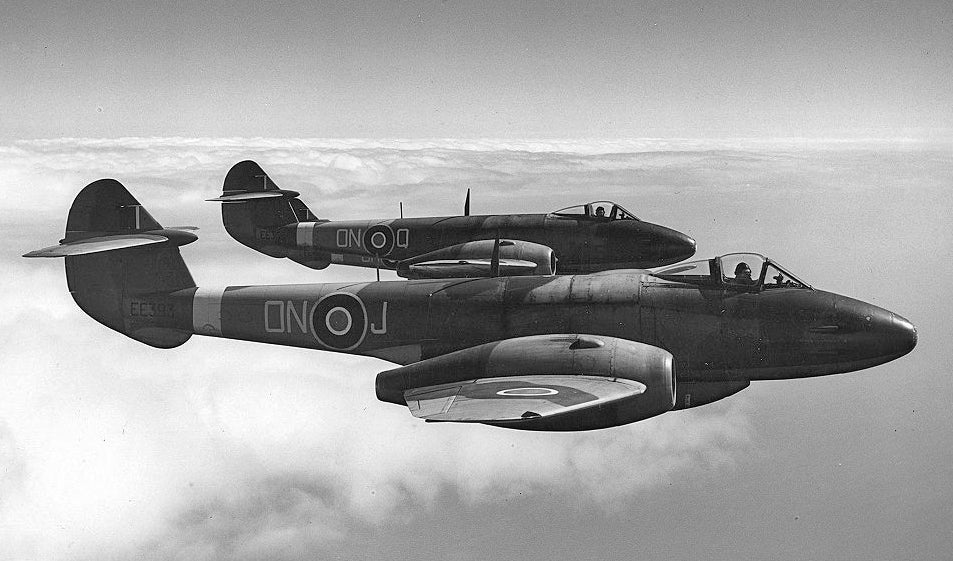
March 5, 1943 – The first flight of the Gloster Meteor. Aviation history is dotted with examples of individual technologies that changed the course of aircraft development, but one of the most far-reaching advances was the development of the turbojet engine. And while we often associate that advance with WWII, its origins can actually be traced back to before the war even started. Royal Air Force engineer !!!error: Indecipherable SUB-paragraph formatting!!! was the first to design and produce a practical turbojet engine, forming !!!error: Indecipherable SUB-paragraph formatting!!! . in 1936 to develop his engine. Though he found it difficult to find financial backers for his project, and hard to find anybody to build a plane to put the new engine in, Whittle eventually visited the !!!error: Indecipherable SUB-paragraph formatting!!! in 1939. There he met Gloster’s chief engineer, !!!error: Indecipherable SUB-paragraph formatting!!! , who took an interest in Whittle’s new engine and began considering an aircraft design in which to implement the turbojet. The first proof of concept aircraft was the !!!error: Indecipherable SUB-paragraph formatting!!! , a single-engine aircraft that took its maiden flight on May 15, 1941. With proof that the turbojet would work, Gloster moved ahead with work on a production fighter, but decided to use two engines to make up for the lack of power in the early turbojet. By 1940, Carter had the first proposal for the twin-engine Meteor fighter, and within 6 months Gloster received an order for 8 prototypes under Specification F9/40, which was basically written to match the fighter already in development. The Meteor was built in a modular fashion consisting of five main sections: nose, forward fuselage, central section, rear fuselage, and tail sections. Various companies were contracted to build modules, and this modular concept allowed production to be dispersed and also facilitated disassembly and transport of the Meteor. The Meteor was introduced on July 27 1944, with the first aircraft delivered to No. 616 Squadron of the RAF. At first, the Meteor was used against the German !!!error: Indecipherable SUB-paragraph formatting!!! , and on August 4, 1944, Meteor pilots claimed the first kills when they shot down 2 V-1s. They would eventually claim 14 “buzz bombs” by the end of the war. Meteors were initially forbidden from flying over German-held territory for fear that one of the fighters could fall into enemy hands. But when the V-1 threat subsided, Meteors finally were finally sent to Europe in January of 1945, but the clash between the Meteor and the !!!error: Indecipherable SUB-paragraph formatting!!! , Germany’s first operational jet fighter, never occurred. Production and development of the Meteor continued after the war, and Royal Australian Air Force Meteors saw significant action in the skies over Korea during the Korean War. Nearly 4,000 Meteors were built by the time production ended in 1955, and the Meteors ended their days with the RAF as target tugs, flying into the 1980s. (Royal Air Force photo)
!!! UNKNOWN CONTENT TYPE !!!
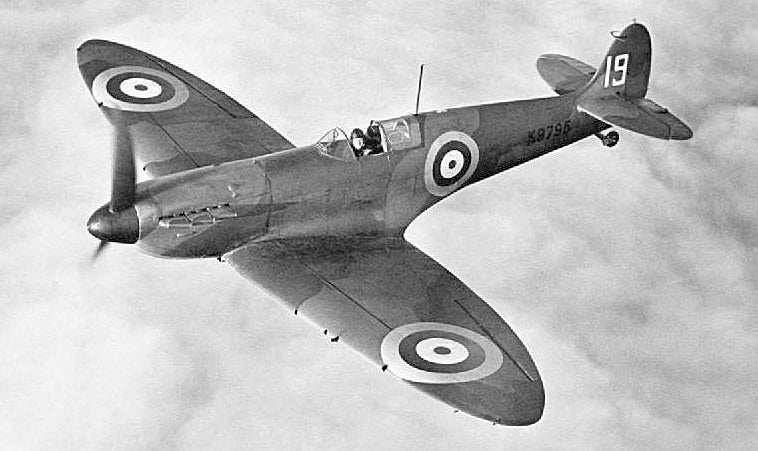
March 5, 1936 – The first flight of the Supermarine Spitfire. World War II produced some of the greatest piston-powered aircraft the world has known, and some have since become iconic symbols of that conflict. Perhaps no aircraft symbolized the British fight agains the Luftwaffe more than the Supermarine Spitfire. With war looming in Europe, the RAF needed to develop a new fighter that could intercept and defeat more advanced German aircraft. !!!error: Indecipherable SUB-paragraph formatting!!! of the !!!error: Indecipherable SUB-paragraph formatting!!! company, who had garnered much experience building fast planes while competing in the !!!error: Indecipherable SUB-paragraph formatting!!! seaplane races, proposed the Type 300, a single engine, low wing monoplane with retractable landing gear. After significant modifications, including the addition of an enclosed cockpit, it was the Type 300 that would be developed into the Spitfire. And the Spitfire was an immediate winner. Upon landing after the first flight of the prototype, Vickers chief test pilot !!!error: Indecipherable SUB-paragraph formatting!!! reportedly said, “Don’t touch anything.” The Spitfire was originally powered by a !!!error: Indecipherable SUB-paragraph formatting!!! 12-cylinder engine providing 1,030 hp. Later models of the Spitfire would be powered by ever more powerful Merlins, and eventually the Spitfire received the !!!error: Indecipherable SUB-paragraph formatting!!! engine which produced up to 2,340 hp. But the early Merlin engines had an achilles heel. Unlike the fuel injected engines in use by the Luftwaffe, the Merlin had a carburetor. This made the Spitfire susceptible to flooding in a nose over dive or inverted flight. At first, pilots learned to combat this problem by first half-rolling the aircraft before a dive. But until a permanent solution could be found with the addition of a pressurized carburetor, it was !!!error: Indecipherable SUB-paragraph formatting!!! who saved the day. Shilling devised a restrictor, nicknamed !!!error: Indecipherable SUB-paragraph formatting!!! , that restricted the flow of fuel to no more than the engine could use at full power. While only a stopgap measure, the restrictor kept the Spitfire flying until the new carburetors could be developed. The later Griffon engines employed a pressure-injection carburetor. During the !!!error: Indecipherable SUB-paragraph formatting!!! , the Spitfire, along with the !!!error: Indecipherable SUB-paragraph formatting!!! , faced the onslaught of the Luftwaffe. Though the Hurricane fought in greater numbers, the Spitfire became the better known fighter of the Battle, as the dashing RAF fighter pilots dueled with German fighters high in the sky while the “Hurrys” slugged it out with the bombers, as the Hurricane was no match for the !!!error: Indecipherable SUB-paragraph formatting!!! . Head to head with the 109, the Spitfire pilot appreciated the firepower provided by its eight Browning .303 machine guns. While not as powerful as the canon used by the Germans, Spitfire pilots could concentrate more firepower on the enemy. The Spitfire was continuously improved and produced throughout the war. Numerous variants were developed, including a carrier-based version which was nicknamed the !!!error: Indecipherable SUB-paragraph formatting!!! . Exported Spitfires were flown by 35 countries around the world. In all, more than 20,000 Spitfires were produced from 1938-1948, making it the third-highest produced military aircraft behind the !!!error: Indecipherable SUB-paragraph formatting!!! and the Bf 109. (UK Government photo)
!!! UNKNOWN CONTENT TYPE !!!

March 6, 1990 – The final flight of the Lockheed SR-71 Blackbird, marking its first retirement. During the !!!error: Indecipherable SUB-paragraph formatting!!! , the United States was desperate to get timely, accurate intelligence on the Soviet Union. After years of flying the !!!error: Indecipherable SUB-paragraph formatting!!! , the Russians were catching up to the high-flying soarer, and the !!!error: Indecipherable SUB-paragraph formatting!!! in 1960 meant that the U-2 was vulnerable. A new aircraft was needed to continue the spying missions. But the search for a replacement had already begun in 1957, as Lockheed and the Central Intelligence Agency began work on anaircraft that could fly higher and faster than the U-2. Lockheed also experimented with technologies to reduce the aircraft’s radar signature, the precursor to what we know as Stealth technology today. The result of those studies led to the single-seat !!!error: Indecipherable SUB-paragraph formatting!!! , which first flew in 1962. The A-12 was followed by the SR-71, which increased the fuel and sensors load and added a second crew member to handle the reconnaissance work. While the A-12 was lighter and faster, and could outperform the SR-71, the SR-71 was a more capable reconnaissance aircraft. Powered by 2 !!!error: Indecipherable SUB-paragraph formatting!!! continuous bleed afterburning turbojets, the Blackbird was capable of Mach 3.3 at 80,000 feet. It could not be shot down by the surface-to-air missiles of the day, and was faster than any Russian fighter at the time. As a result, no SR-71 was ever lost to enemy fire. In addition to its reconnaissance work, the Blackbird was also a record setter. It holds numerous world records over a recognized course (such as a flight from New York to London) and, in 1976, the Blackbird set the records for altitude in horizontal flight and speed over a straight course by flying at 85,068.997 feet at an average of 2,193.167 mph. It also set the record for speed over a closed course (departing and returning to the same location), flying 1000 km at an average speed of 2,092.294 mph. Inevitably, government budget restraints forced the end of the Blackbird’s mission, even though it was continuing to provide excellent reconnaissance information. For the Blackbird’s final flight, pilot Lt. Col. Ed Yielding and reconnaissance systems officer Lt. Col. Joseph Vida flew from Palmdale, California to Washington Dulles International Airport in northern Virginia. Along the way, and true to form for the untouchable SR-71, Yielding and Vida set a record time for the flight from Los Angeles to Washington, DC, making the trip in 1 hour, 4 minutes, 20 seconds, with an average speed of 2,124 mph. The SR-71A, serial number 61-17972, was donated to the Smithsonian Institution and now resides in the Smithsonian National Air and Space Museum’s !!!error: Indecipherable SUB-paragraph formatting!!! . On September 28, 1994, Congress voted to restart the Blackbird program, but its second life lasted only 5 brief years before it was retired for good in 1999. (Photo via !!!error: Indecipherable SUB-paragraph formatting!!! )
!!! UNKNOWN CONTENT TYPE !!!
Short Take Off
!!! UNKNOWN CONTENT TYPE !!!

March 5, 1979 – Voyager 1 makes its closest approach to Jupiter. Voyager 1 was launched on September 5, 1977 on a mission to study the outer solar system. Launched just 16 days after !!!error: Indecipherable SUB-paragraph formatting!!! , Voyager 1 has operated for more than 38 years and continues to return data to Earth. After close flybys of Jupiter, Saturn and Saturn’s moon Titan, Voyager 1 continued to the boundaries of the outer heliosphere and, on August 25, 2012, it became the first spacecraft to enter interstellar space. Voyager will continue functioning until its batteries run out in 2025. (NASA/JPL illustration)
!!! UNKNOWN CONTENT TYPE !!!
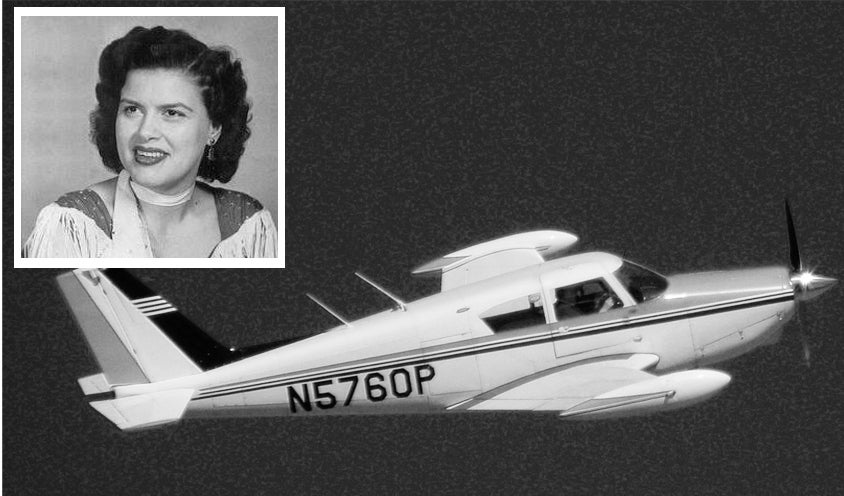
March 5, 1963 – A plane crash claims the life of country music singer Patsy Cline. Following a benefit concert in Kansas City, Kansas, Cline was unable to leave following the show because the local airport was fogged in, and she passed on a an offer of a car ride to Nashville, opting to fly out the next day. On the day of the crash, she boarded a !!!error: Indecipherable SUB-paragraph formatting!!! (N-7000P, not the aircraft illustrated) for the flight to Nashville, and after stopping for fuel in Dyersburg, Tennessee, the pilot chose to continue despite worsening weather, even though he was not qualified to fly on instruments (IFR). Cline’s plane crashed 90 miles from Nashville, and the NTSB report cited the cause as the pilot’s loss of control in conditions for which he was not trained to fly. Along with Cline, musicians Hawkshaw Hawkins, Cowboy Copas, and pilot Randy Hughes were also killed. (Cline photo by Four Star Records via !!!error: Indecipherable SUB-paragraph formatting!!! ; Piper PA-24 photo Alan Radecki via !!!error: Indecipherable SUB-paragraph formatting!!! )
!!! UNKNOWN CONTENT TYPE !!!
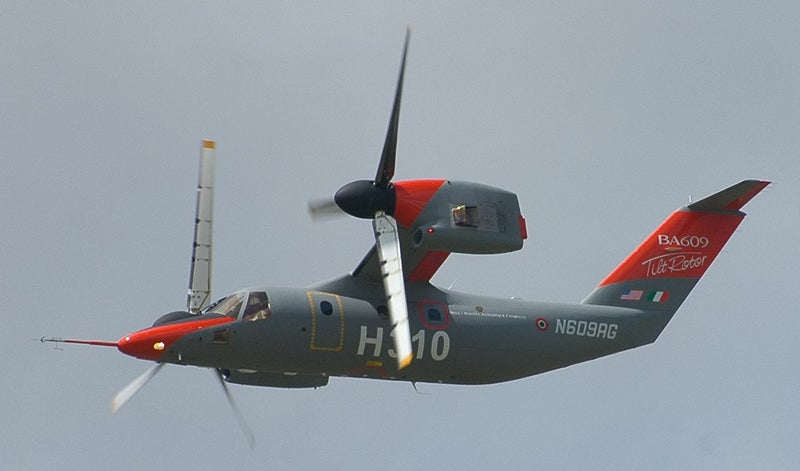
March 6, 2003 – The first flight of the AgustaWestland AW609, a twin-engine tiltrotor !!!error: Indecipherable SUB-paragraph formatting!!! aircraft being developed for the civilian market. Similar to the !!!error: Indecipherable SUB-paragraph formatting!!! , the AW609 is capable of vertical takeoff and landing, with transition to forward flight provided by turboprop engines mounted in swiveling nacelles on the end of the wings. AgustaWestland plans to market the AW609 to VIP customers and the offshore oil and gas industry. Development was slowed after a crash of the second prototype in October 2015 which killed two test pilots. For still unknown reasons, the aircraft broke up in midair during high speed testing. The AW609 is still awaiting certification, and AgustaWestland is considering a site in the US for production. (Photo by Dmitry Motti via !!!error: Indecipherable SUB-paragraph formatting!!! )
!!! UNKNOWN CONTENT TYPE !!!

March 6, 1927 – The birth of US astronaut Gordon Cooper. Born in Shawnee, Oklahoma, Leroy Gordon “Gordo” Cooper was an engineer, test pilot, US Air Force pilot, and one of the !!!error: Indecipherable SUB-paragraph formatting!!! , the original seven astronauts to take part in !!!error: Indecipherable SUB-paragraph formatting!!! , NASA’s first manned space program and precursor to the !!!error: Indecipherable SUB-paragraph formatting!!! and !!!error: Indecipherable SUB-paragraph formatting!!! programs. On the final Mercury mission in 1963, Cooper piloted his Mercury capsule on the longest flight of the Mercury program, and was the first American to sleep in space. He was also the last American astronaut launched into space on a solo orbital mission. Cooper also flew as Command Pilot of !!!error: Indecipherable SUB-paragraph formatting!!! in 1965, a flight that set the first record for American duration in space. Cooper died on October 4, 2004 in Ventura, California at age 77. (NASA photo)
!!! UNKNOWN CONTENT TYPE !!!
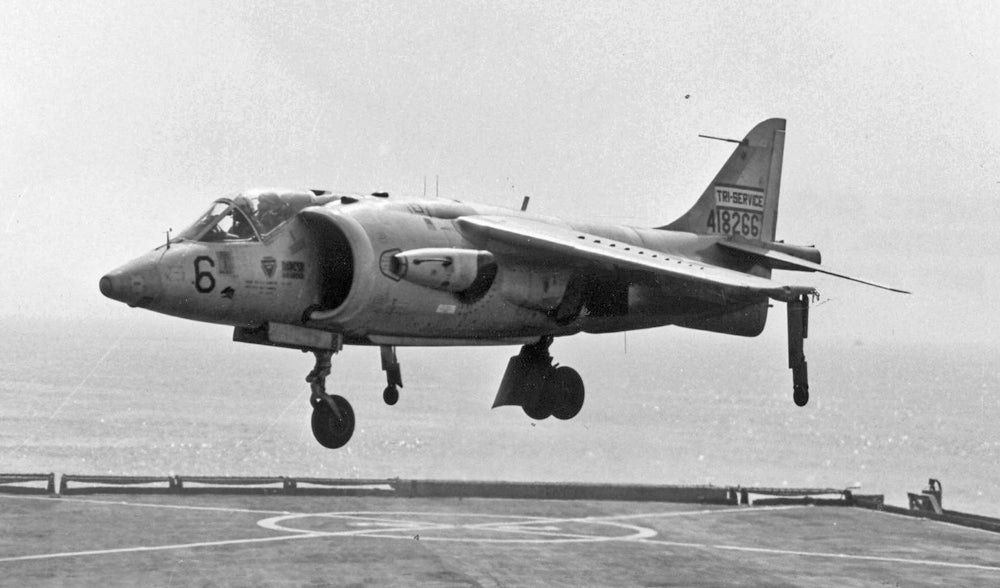
March 7, 1964 – The first flight of the Hawker Siddeley Kestrel. The Kestrel was the second experimental aircraft, following the !!!error: Indecipherable SUB-paragraph formatting!!! , that explored !!!error: Indecipherable SUB-paragraph formatting!!! (V/STOL) and led to the development of the !!!error: Indecipherable SUB-paragraph formatting!!! . Development of both the P.1227 and Kestrel began in 1957 following the introduction of the !!!error: Indecipherable SUB-paragraph formatting!!! vectored-thrust engine. The Kestrel (FGA.1) was an improved version of the P.1227, with fully swept wings, larger tail, and enlarged fuselage to accommodate the larger !!!error: Indecipherable SUB-paragraph formatting!!! engine. Nine Kestrels were built, and flown by the Tripartite Evaluation Squadron comprised of pilots from England, Germany and the US (where it was known as the XV-6A). Ultimately, the Kestrel would become the prototype for pre-production Harriers. (US Air Force photo)
!!! UNKNOWN CONTENT TYPE !!!
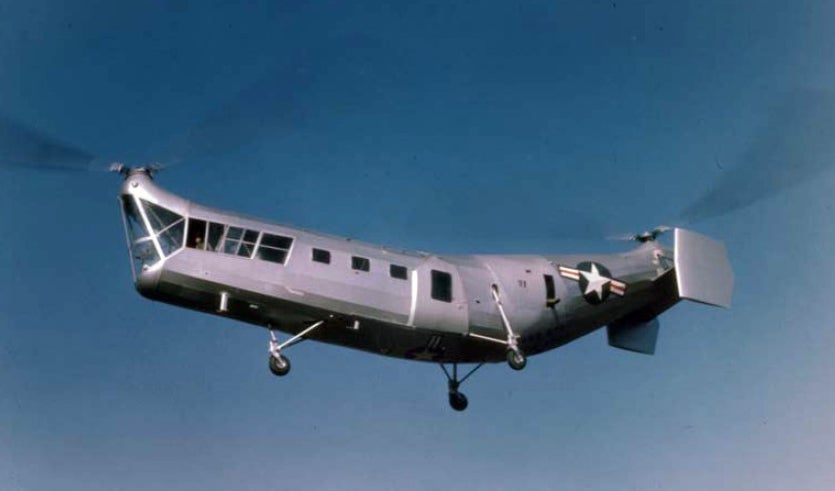
March 7, 1945 – The first flight of the Piasecki HRP Rescuer, a tandem rotor helicopter designed by !!!error: Indecipherable SUB-paragraph formatting!!! , a pioneer in the development of tandem rotor aircraft. To keep the two rotors from colliding, the rear of the fuselage curved upward, giving the Rescuer the nickname “Flying Banana.” It featured a tricycle landing gear, and the fuselage was built of steel tubing covered with doped fabric. The Rescuer was the first US military helicopter with the capacity for a significant number of passengers, and it served the US Navy, Marine Corps and Coast Guard as a transport and cargo helicopter, and for air-sea rescue. Piasecki built 28 Rescuers, and it was later developed into the !!!error: Indecipherable SUB-paragraph formatting!!! which served in Korea and Vietnam. (US Coast Guard photo)
!!! UNKNOWN CONTENT TYPE !!!
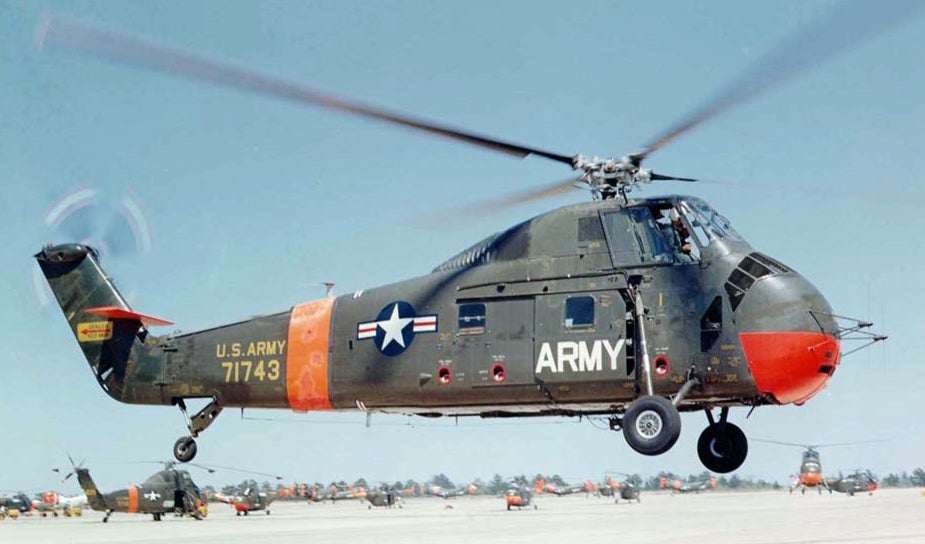
March 8, 1954 – The first flight of the Sikorsky H-34. The H-34 was originally designed by Igor Sikorsky as an anti-submarine warfare (ASW) platform and was a development of the !!!error: Indecipherable SUB-paragraph formatting!!! . Powered by a !!!error: Indecipherable SUB-paragraph formatting!!! radial engine in the nose that drove the main rotor by a drive shaft that passed up through the cockpit, the H-34 had a maximum speed of 173 mph and could carry up to 18 troops or 8 stretchers. The Army chose not to fly the H-34 in Vietnam, but the Marine Corps converted theirs into the first helicopter gunships by adding two machine guns and two rocket pods. It served the US until the mid-1960s, but also flew for numerous countries around the world, as well as in a civilian version called the S-58. (US Army photo)
!!! UNKNOWN CONTENT TYPE !!!
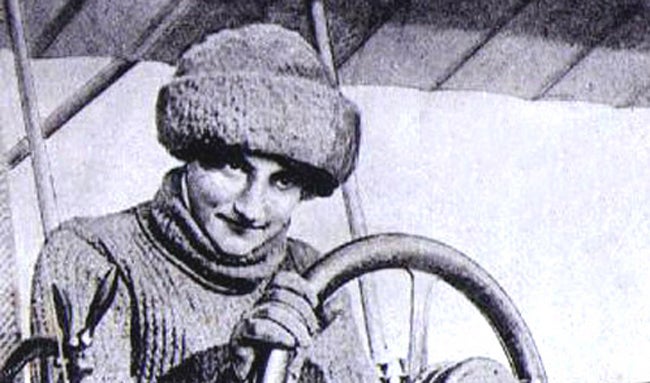
March 8, 1910 – Raymonde de Laroche becomes the world’s first woman to earn a pilot license. Born in 1882, de Laroche decided to become a pilot after seeing !!!error: Indecipherable SUB-paragraph formatting!!! flying demonstration in 1908. The next year, Laroche convinced her friend and airplane manufacturer !!!error: Indecipherable SUB-paragraph formatting!!! to teach her to fly, flying some 300 yards on her first flight, a solo flight since the Voisin aircraft had only one seat. One year later, de Laroche received license #36 from the !!!error: Indecipherable SUB-paragraph formatting!!! . She made numerous flying demonstrations around Europe and Egypt, and despite serious injuries she sustained in a crash, she returned to the air and was awarded the Aero-Club of France’s !!!error: Indecipherable SUB-paragraph formatting!!! for a 4-hour, nonstop flight. She also set two altitude records for women in 1919. De Laroche died on July 18, 1919 in a crash that also killed her co-pilot. (Library of Congress photo)
!!! UNKNOWN CONTENT TYPE !!!
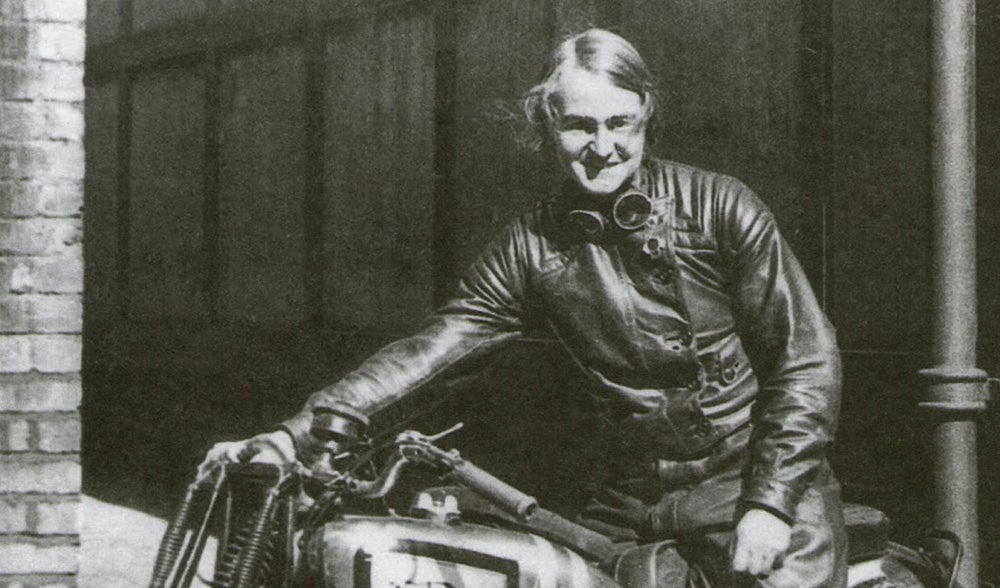
March 8, 1909 – The birth of Beatrice “Tilly” Shilling, a British aeronautical engineer, motorcycle racer, and auto racer. Shilling is best known for her invention of the !!!error: Indecipherable SUB-paragraph formatting!!! , known to pilots as Miss Shilling’s Orifice, which helped eliminate the problem of engine flooding in the early !!!error: Indecipherable SUB-paragraph formatting!!! engines used on the !!!error: Indecipherable SUB-paragraph formatting!!! and !!!error: Indecipherable SUB-paragraph formatting!!! . Following the war, Shilling worked on the !!!error: Indecipherable SUB-paragraph formatting!!! missile and investigated the effects wet runways on aircraft braking. As a racer, she was awarded the Gold Star for lapping the !!!error: Indecipherable SUB-paragraph formatting!!! circuit at an average of 106 mph on her !!!error: Indecipherable SUB-paragraph formatting!!! M30 motorcycle. Shilling died on November 18, 1990 at age 81. (Photo author unknown)
!!! UNKNOWN CONTENT TYPE !!!
Recent Aviation History Posts
!!! UNKNOWN CONTENT TYPE !!!
!!! UNKNOWN CONTENT TYPE !!!
!!! UNKNOWN CONTENT TYPE !!!
!!! UNKNOWN CONTENT TYPE !!!
If you enjoy these Aviation History posts, please let me know in the comments. And if you missed any of the past articles, you can find them all at
!!!error: Indecipherable SUB-paragraph formatting!!!
.
!!! UNKNOWN CONTENT TYPE !!!
 Smallbear wants a modern Syclone, local Maple Leafs spammer
> ttyymmnn
Smallbear wants a modern Syclone, local Maple Leafs spammer
> ttyymmnn
03/08/2016 at 12:41 |
|
I predict the (re)return of a certain article from the dead.
 facw
> Smallbear wants a modern Syclone, local Maple Leafs spammer
facw
> Smallbear wants a modern Syclone, local Maple Leafs spammer
03/08/2016 at 12:52 |
|
It was on my left-bar yesterday. It never really goes away...
 ttyymmnn
> Smallbear wants a modern Syclone, local Maple Leafs spammer
ttyymmnn
> Smallbear wants a modern Syclone, local Maple Leafs spammer
03/08/2016 at 12:56 |
|
History does have a way of repeating itself. Honestly, I’m at the point where I’m overlapping the earliest posts of this series. Now I’m bringing the older posts up to match this format, and cribbing some of the older stuff I wrote for new posts. Once I get a whole year of this format, I’m going to quit and move on to one-off posts about weird airplanes. I’ve done a few of them and they’re fun.
http://oppositelock.kinja.com/tag/planes-you…
 -this space for rent-
> ttyymmnn
-this space for rent-
> ttyymmnn
03/08/2016 at 13:14 |
|
Weird plane and a ‘happened today’
Today in 1955: At Great Falls AFB (now Malmstrom Air Force Base (Official)), the USAF’s 91st Strategic Reconnaissance Squadron was assigned a unique mission called FICON (FIghter CONveyor) — launching and recovering modified F-84s from specially-equipped B-36 bombers.
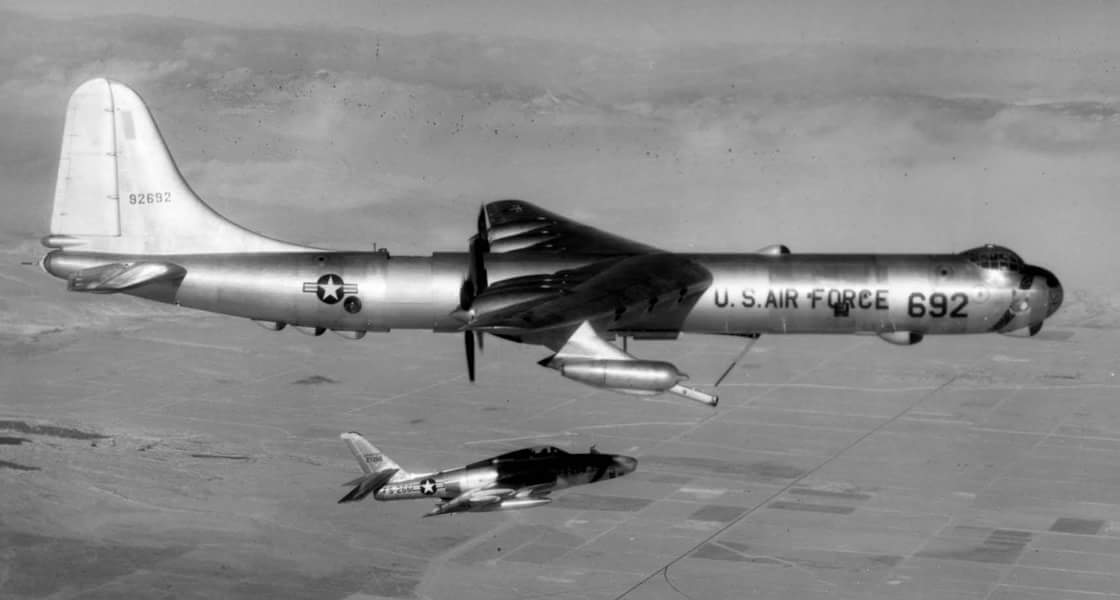
http://1.usa.gov/1pc3IHC
https://m.facebook.com/story.php?stor…
 Smallbear wants a modern Syclone, local Maple Leafs spammer
> ttyymmnn
Smallbear wants a modern Syclone, local Maple Leafs spammer
> ttyymmnn
03/08/2016 at 13:16 |
|
I like those posts too. Looking forward to that!
 ttyymmnn
> -this space for rent-
ttyymmnn
> -this space for rent-
03/08/2016 at 13:18 |
|
I actually wrote a one-off post about FICON about a year ago. Wild concept, desperate, really. But you can see how SAC was still thinking about bombers and fighters in WWII terms.
 ttyymmnn
> Smallbear wants a modern Syclone, local Maple Leafs spammer
ttyymmnn
> Smallbear wants a modern Syclone, local Maple Leafs spammer
03/08/2016 at 13:19 |
|
Over the past year or so, I’ve come across lots and lots of stuff I’ve never heard of, and they all got dumped into a folder. I’m a few posts ahead on The Date.., maybe I’ll throw one together this week.
 -this space for rent-
> ttyymmnn
-this space for rent-
> ttyymmnn
03/08/2016 at 13:24 |
|
They had to think that way until aerial refueling was ready since nuclear powered everything wasn’t panning out.
 Rusty Vandura - www.tinyurl.com/keepoppo
> ttyymmnn
Rusty Vandura - www.tinyurl.com/keepoppo
> ttyymmnn
03/08/2016 at 17:36 |
|
You have followers who will be far more expert than I, though Frank Whittle and his Engine were a curiosity of mine a while back.
Whittle’s engine was centrifugal flow, while today’s engines are axial flow. And much more efficient.
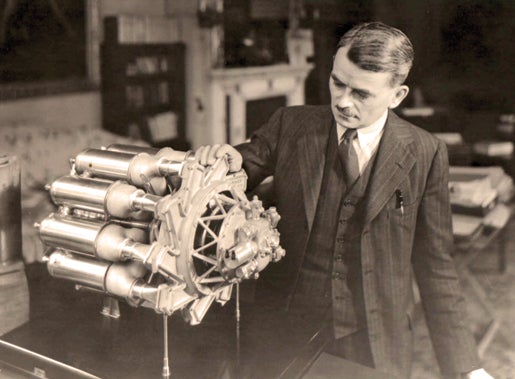
Axial flow, centrifugal flow, compressor section, engine bleed air, it’s all quite interesting. But I type in the shadow of others in this space...
 ttyymmnn
> Rusty Vandura - www.tinyurl.com/keepoppo
ttyymmnn
> Rusty Vandura - www.tinyurl.com/keepoppo
03/08/2016 at 17:49 |
|
I've never really delved into it, and have only a very superficial knowledge of how it all works. But thanks for pointing out the difference. I always appreciate it when others add information to these posts that I don't have room for.
 sunnydaysam
> ttyymmnn
sunnydaysam
> ttyymmnn
03/09/2016 at 17:22 |
|
wow! another fine bit. As a total Avnut, I’m addicted to your posts, ttyymmnn.
btw; wouldn’t that Piasecki make the coolest RV in the world? I had an opportunity to buy an H-21 that actually flew for $600 cash one time although it needed a lot of work. [play sound of sam kicking himself all day for turning it down]
 ttyymmnn
> sunnydaysam
ttyymmnn
> sunnydaysam
03/09/2016 at 17:31 |
|
Thank you sir! And yes, that Piasecki would make an awesome RV. Or boat.
